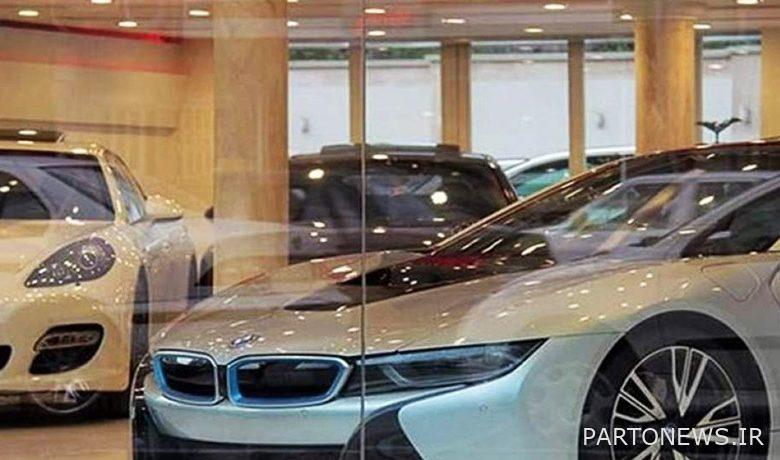The car became 1.5 percent cheaper

According to Tejarat News, according to the data of the “Divar” online market, the average price in the entire car market during the first two weeks of October, compared to the same period in September, has decreased by about 1.5 percent.
Reasons for cheapness in the car market
From early September until the end of the first half of October, events took place, all of which affected the price trend of the car market. Earlier last month, the car market, especially foreign models, was shocked by the announcement of the Islamic Consultative Assembly’s plan to liberalize imports.
At that time, it was reported that the parliaments had drafted a plan for the conditional liberalization of car imports and that it would soon be made public. The announcement was enough to put the imported car market on a downward trend and many to become sellers.
The plan to liberalize car imports is one of the clauses of the upstream plan of the Islamic Consultative Assembly called car reorganization, which has been hotly debated since early September. Accordingly, it was decided to liberalize the import of cars in exchange for exports without transferring currency, so that after three years and a few months, the ban on importing cars into the country would be lifted and the market would be on a competitive threshold, albeit slightly.
Although it was not clear whether the plan would be voted on in the open court of the Islamic Consultative Assembly, the car market (foreign and domestic) reacted immediately, and the average price dropped by about six percent within a week.
Parliament was expected to vote on the car import liberalization plan very soon, but it took more than three weeks for the plan to be made public.
Finally, on the 24th of September, the plan to liberalize car imports was presented in the open court of the parliament and approved with a high vote. With the conversion of the car import liberalization plan into a resolution, the downward trend of prices in the car market, especially foreign ones, continued and customers hoped for a heavy fall in the market. This was while the decision to import cars hit the barrier of the Guardian Council and the council returned it to the parliament with some objections.
A spark for price growth in the market
Although the announcement of the non-approval of the car import decision by the Guardian Council sparked price growth in the market (especially the foreign car market), the reaction of import activists and experts and the announcement that the Guardian Council’s objections can be fixed did not allow the price to flare up. .
Prior to sending the car import bill to the Guardian Council, it was thought that the council considered the bill contrary to the general policies of the system, especially the resistance economy, and rejected it for this reason, but the objections seemed much simpler.
Shortly afterwards, lawmakers announced that the Guardian Council’s objections to the car import liberalization resolution could be remedied and that the Industries Commission would amend it and take it to the public.
According to experts, import activists and parliamentarians, the slightest spark of price increase in the car market was extinguished and the price curve somehow stabilized on the rails. This time, however, the car market received a shock due to the increase in the price of currency, and for a few days, the price curve took an upward trend.
The impact of the declining currency trend on the car market
As the inflammation in the foreign exchange market decreased, so did the price of cars, however, as market participants stated, there was not much buying and selling.
Now, according to what can be heard from the market, the price curve in the first half of October and compared to the same period in September, has decreased by about 1.5 percent and the market is waiting for two issues, one is the fate of the car import liberalization decision and the other .
The general perception and, of course, the opinion of experts and activists in the field of automobiles is that the approval of the import liberalization decree and the official return of Iran to the Borjam negotiations and reaching an agreement will undoubtedly lead to a drop in prices in the automotive market.
Even the occurrence of one of these events will lower the car price curve, so that if, for example, the car import decision is approved by the Guardian Council and is on the verge of implementation, the market reaction to this will definitely be a price drop.
Some experts believe that by resuming car imports, at least 50% of the price of foreign cars will fall. According to them, the fall in the price of imported cars will spread to the domestic market as well, because one of the reasons for the increase in the price of domestically produced cars (along with the two currency factors and inflation expectations) has been the jump in imported prices.
The possibility of a wave of cheapness in the car market
With the final approval of the car import liberalization decree and its official implementation, a wave of price reduction will cover the market; A wave that will be much faster among foreign models.
But in addition to the issue of import liberalization, Iran’s return to the Borjam negotiations is another important and influential issue in the car market.
According to experts, the mere return of Iran to the talks will reduce inflation expectations, which will lower the price of the currency and, consequently, the price curve in the car market will fall.
Naturally, if the negotiations are concluded, the nuclear agreement and the IAEA Board will be revived, inflation expectations will also fall, and the effect on the foreign exchange and car markets will be very large. So the car market may face two surprises in the not-too-distant future, resulting in a sharp drop in prices, both in the foreign and domestic markets.
Car market in recession
But the car market is still in recession these days, and the price curve has almost reached relative stability. According to market participants, there is not much buying and selling and citizens are waiting and looking to the future.
They are waiting to see what happens to Borjam and the decision to import the car, so they consider buying and selling to some extent a risk at this point.
Some citizens are waiting for the price reduction in the area of liberalization of car imports and, of course, the revival of Barjam so that the price of cars will be closer to their purchasing power. The desire to buy in the car market seems to have decreased a lot, while some are willing to sell for fear of falling prices and devaluation of their capital (car).
Of course, the desire to sell is not so great, because in any case, there are expectations on the supply side that the car import decision will not be approved and the Barjam negotiations will not succeed.
In fact, some people think that the car price curve will grow in the future due to the non-approval of the import decision and the failure of Borjam, so they consider the sale at the current stage as a risk. After all, the car market is currently in a severe recession, and if the currency does not rise again and inflation expectations do not rise, the price curve in this market is unlikely to rise.
What about the price?
Let’s go to the car market and see what the price curve experiences. According to reports published by ISNA and IRNA, the price curve is almost declining these days.
Accordingly, Samand Al-Ix is priced at 243 million Tomans and Peugeot 206 Type 2 is sold for 245 million Tomans. Both of these cars have had a price drop of one million Tomans during this week.
Among other cars, Peugeot 206 Type 5 is sold at a price of 296 million Tomans and a simple Peugeot Pars is priced at 280 million Tomans. The price of 236 million Tomans is offered for Rana in the LX model and its plus model is priced at 272 million Tomans.
It is reported from Dena market that its normal model is priced at 325 million Tomans, but Dena turbocharged gear is bought and sold for 433 million Tomans. Haima and Tara are priced at 790 million Tomans and 440 million Tomans, respectively.
Among Saipa products, Pride 111 is priced at 154 million Tomans and Tiba is sold at 148 million Tomans. The price of Saina has reached 158 million Tomans and you have to spend 170 million Tomans for a small gear. Shahin is currently priced at 345 million tomans.
Source: the world of economy
Read the latest car news on the Commercial Car News page.

